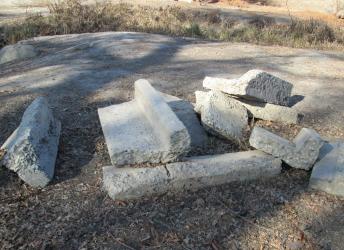Now, cement technology to reduce CO2 emissions!
Q. What is LC3 technology?- Published on 22 Sep 17a. New cement material technology that reduces CO2 emissions in manufacturing process
b. Limestone calcined clay cement technology
c. Combination of clinker limestone and clinker calcined clay
d. All of the above
ANSWER: All of the above

A research collaboration between India and Switzerland on a new cement material that can reduce carbon dioxide emissions in the manufacturing process is set to take off into implementation.
The construction sector is a major contributor to global carbon dioxide emissions.
Though this is known, it appears difficult to reduce the scale of construction, especially as it is a route to establishing more equitable conditions in developing countries like India.
One way of mitigating the emissions factor is the use of Limestone Calcined Clay Cement or the LC3 technology.
Traditional processes that manufacture cement from clinker-limestone or clinker-calcined clay combinations are well known.
LC3 effects a synergy between these processes. The combination of the new method and the material properties effectively reduces carbon dioxide emissions by 30% as compared to the traditional way of manufacturing cement.
How It Works- In manufacturing Portland cement, limestone and materials like clay are heated together in huge kilns to high temperatures (approximately 1,450 degrees C), so that they fuse without melting to give clinker.
- This is the most CO2-intensive part of the whole process.
- The carbon dioxide comes both from the burning of the fuel needed to create that temperature and due to the breakdown of limestone into calcium oxide and carbon dioxide.
The latter part accounts for 60% of the CO2 emissions in manufacture of cement. - The best thing to do would be to substitute CO2-intensive clinker with a different material.
In India, fly ash - a waste produced in the burning of coal for producing energy - is used in the manufacture of blended cement. - However this is used in a lower proportions and only where available; therefore, for effectively reducing emissions, more clinker is to be substituted with calcined clay and limestone.
- This reduces emissions by 30% with respect to Portland cement.
- There is an added advantage to the new material when used in coastal areas where reinforced concrete can be damaged by chloride diffusing through the material.
- The new cement has less porosity and it is more difficult for the chloride to get in and damage the steel rods.
- This gives the new cement a longer service life.